Dive into the world of the dachshund, an iconic breed known not just for its long body but also for its captivating array of coat colors. Often sweetly termed “wiener dogs” or “sausage dogs,” dachshunds are more than just known for their playful names. Behind their soulful eyes and distinctive shape lies a spectrum of colors and patterns. Join us as we explore this colorful world of dachshund colors, and discover the enchanting hues these delightful pups can showcase. This breed is a testament that beauty truly comes in all shapes and sizes.
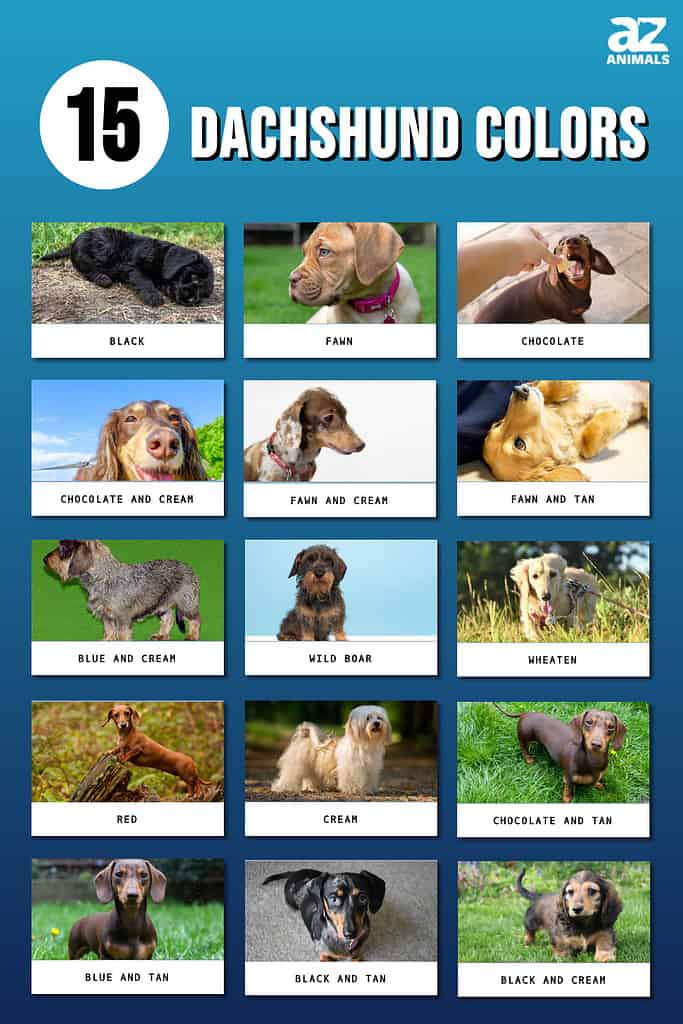
#1 Black

The rarity of the recessive genes necessary to result in a black dachshund makes it a rare color.
©Karoly Tugyi/iStock via Getty Images
A solid black dachshund is an exceptional sight within the breed. Recognized by the AKC as a non-standard color, its rarity is deeply rooted in genetics. The recessive genes responsible for producing this pure black coat are themselves incredibly scarce. This makes the solid black dachshund one of the rarest colors in their breed. True to their appearance, solid black dachshunds exhibit a uniform black color without any presence of color variations.
Their pure and unblemished coat color, coupled with its rarity, often makes them highly sought after. Given their uncommon nature, owning a solid black dachshund can come at a premium. These dachshunds have been known to cost prices upwards of $4,000, and in particularly unique cases, even more.
#2 Fawn

A portrait profile shot of an 8-week-old Dogue de Bordeaux (French Mastiff) with the less common fawn isabella coloring.
©Kev Gregory/Shutterstock.com
Fawn, known as ‘Isabella’ by the American Kennel Club, is a standout color among the dachshunds’ many shades. What makes the fawn dachshund especially unique is not just its muted elegance, but also the genetics behind it. To produce this rare solid color, both parent dachshunds must carry the dilute gene. The result? A dachshund with a smooth and uniform coat, devoid of any hints of tan or cream. This pure hue of color is a distinguishing feature of the fawn dachshund, setting them apart from other variations of the breed. Equally notable are their gray eyes, which match perfectly with their gray noses and tails, offering a cohesive and singular appearance that is unmistakable.
#3 Chocolate

Recessive fur genes must be present in both parents for a dachshund to be chocolate.
©Kaczleo/Shutterstock.com
Solid chocolate dachshunds represent a unique and non-standard color variation within the breed. They are acknowledged for their distinct and varying shades of chocolate. The uniqueness of this color lies in the recessive genes that must be present in both parents. This paves the way for a spectrum of chocolate tones in their offspring, which can range from a light cocoa hue to a rich, deep chocolate tone.
#4 Chocolate and Cream
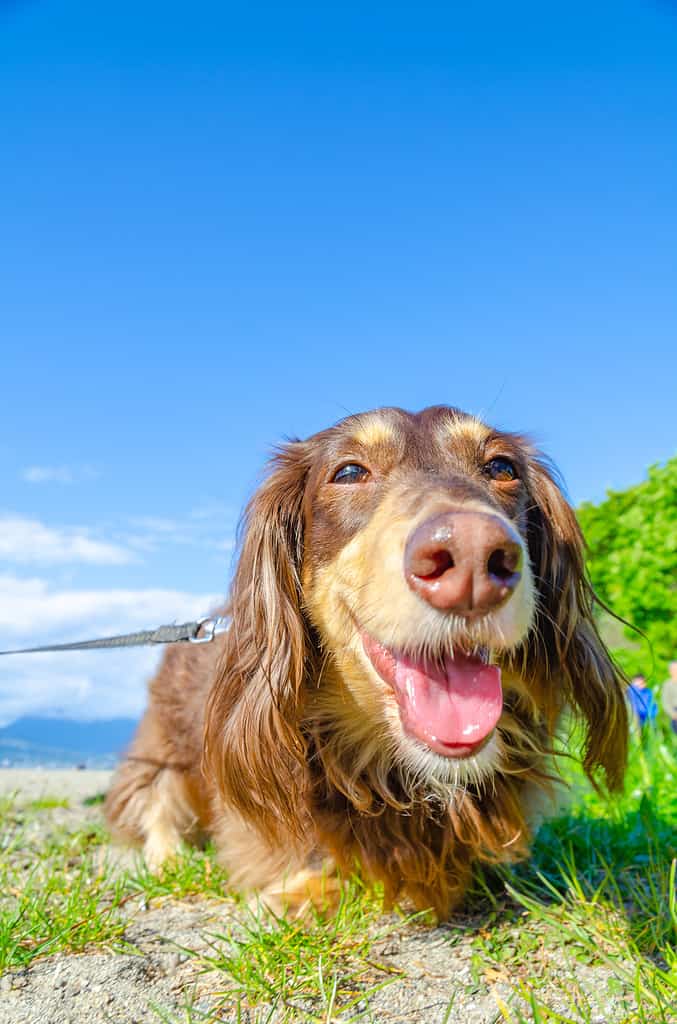
Light golden patches grace the ears, noses, eyebrows, chest, and legs of chocolate and cream dachshunds.
©YasuJP/iStock via Getty Images
With a base coat reminiscent of chocolate, these dachshunds are adorned with beige or light golden patches, creating a visual that’s as delightful as it sounds. These patches typically grace their ears, noses, eyebrows, chest, and legs, adding layers of visual depth and contrast. Complementing their unique coat are their features: the nose, tail, and claws maintain the theme with a consistent brown. Their eyes, a captivating shade of hazel or light brown, carry a gentle warmth that adds to their overall allure.
#5 Fawn (Isabella) and Cream

The Isabella color carries the essence of muted chocolate.
©Ihar Halavach/iStock via Getty Images
Fawn and cream dachshunds present a softer, more balanced palette. While they share similarities with the fawn and tans, it’s their subtler cream patches that set them apart. These lighter patches don’t starkly contrast but rather seamlessly blend with the base color, creating a more unified and delicate appearance. Their primary coat color, often referred to as Isabella, carries the essence of a muted chocolate, reminiscent of a chocolate lightly touched by milk. It’s this washed-out chocolate tone that forms the backdrop against which the cream points emerge. These cream points, varying in tone, can manifest as a sun-kissed golden or a more subdued off-white.
#6 Fawn (Isabella) and Tan
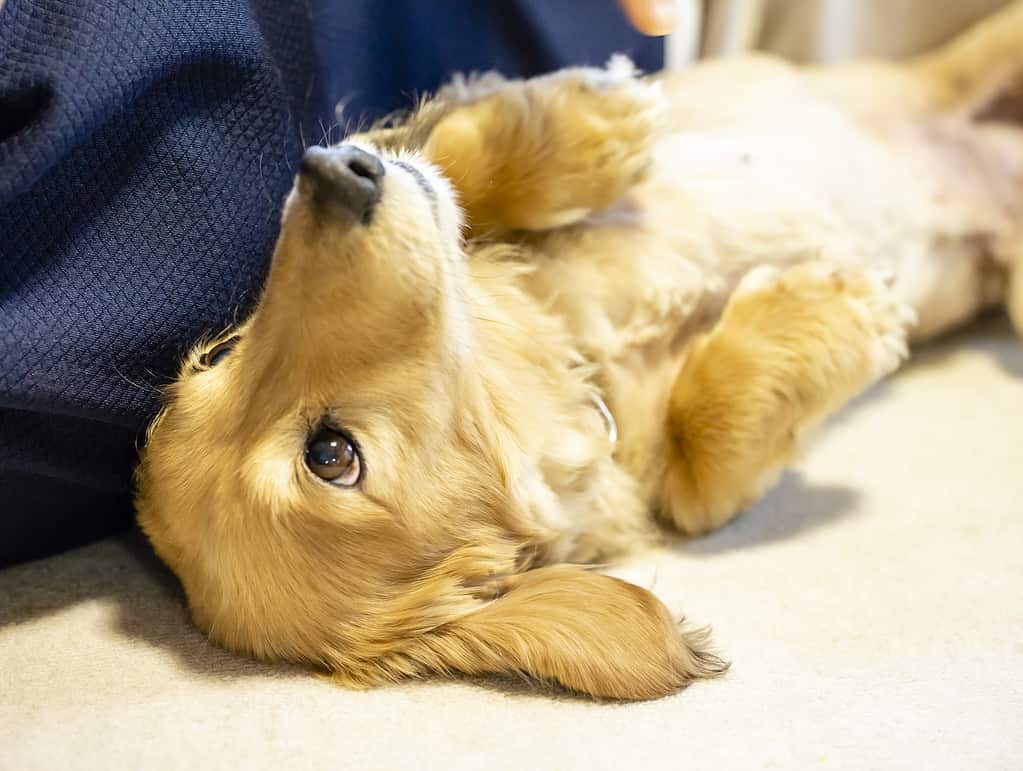
A dachshund can have a color combination of fawn and tan.
©minianne/iStock via Getty Images
The fawn and tan variety holds a special place due to its rarity and subtle charm. This coloring, a result of the dilute gene, showcases a gentle chocolate hue that’s both appealing and serene. Their primary coat adopts a light chocolate or fawn shade, which gracefully pairs with deep tan markings. However, distinguishing between the two can sometimes be a bit tricky, as the tan markings often blend subtly, almost merging with the lighter Isabella backdrop. This creates a gentle transition of hues that’s pleasing to the eye.
#7 Blue and Cream

Dachshund
©Jurriaan Schulman / CC BY-SA 3.0, from Wikimedia Commons, the free media repository – License
The base of this breed variant isn’t the vivid blue one might first imagine upon hearing the name. Instead, dachshunds carry a unique shade close to gray, specifically reminiscent of gunmetal blue. This understated elegance is the result of the dilute gene at work. Highlighting this blue base are cream points, adding softness to the dachshund’s overall appearance. You’ll find these lighter patches surrounding their muzzle, eyebrows, chest, legs, and even their tail. This balance of gunmetal and cream creates a harmony of colors, with neither overpowering the other.
When compared to the more vibrant black and cream dachshunds, the blue and cream variety is notably more subdued. However, it’s worth noting that when the blue base leans towards a darker tone, distinguishing between the two can become a tad challenging for the untrained eye.
#8 Wild Boar
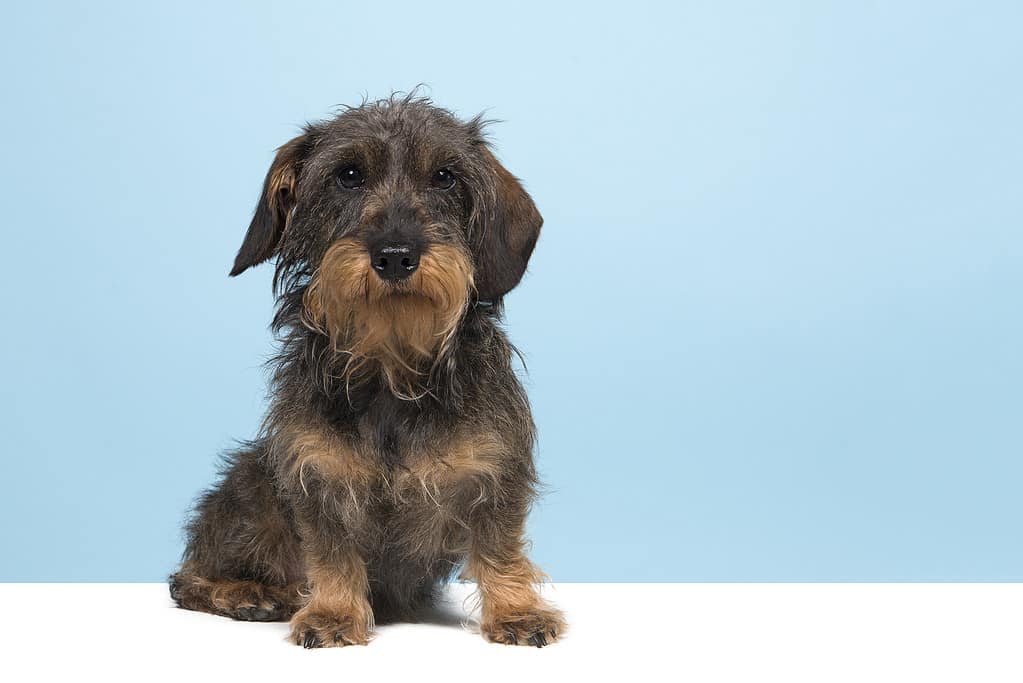
Dachshunds of the wild-boar variety need the occasional grooming.
©MirasWonderland/iStock via Getty Images
Wild boar dachshunds stand out with their distinct blend of gray, black, and brownish shades. Typically seen in wire-haired and smooth-haired variants, this coloration overlays a base that could be chocolate, red, black, or blue. Wire-haired wild boars, especially with their shaggy coats, require a great groomer. Though this color is a nod to the wilderness, it’s a rarity in the dachshund world, making these dogs unique and sought after.
#9 Wheaten
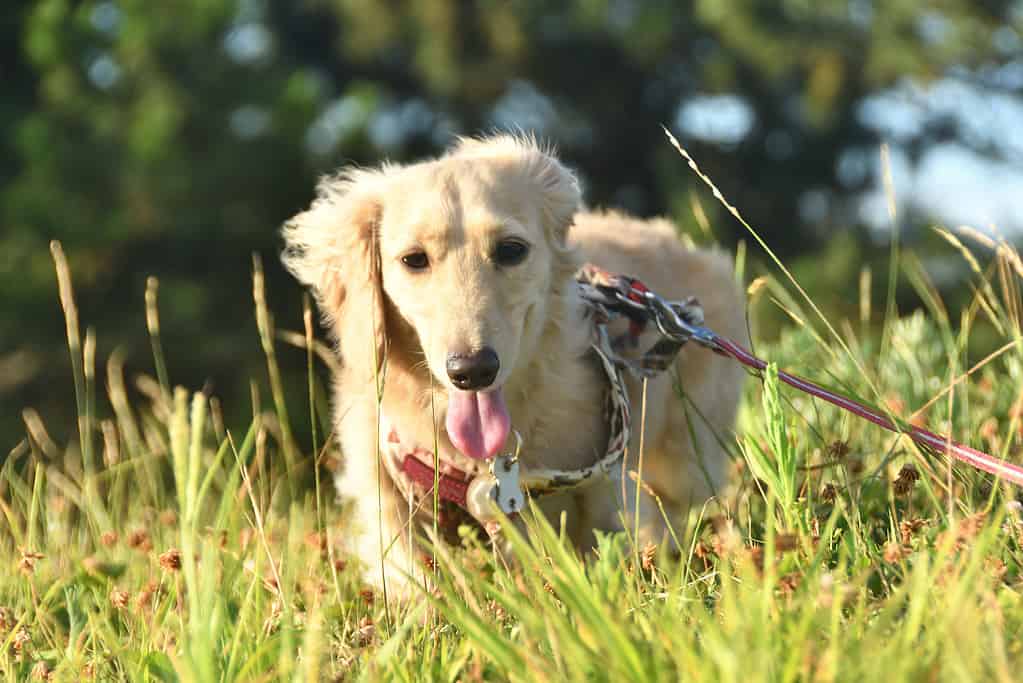
The wheaten coat resembles that of terriers, offering a shaggy appearance.
©Yata/iStock via Getty Images
Wheaten dachshunds showcase a color that delicately balances between red and cream, presenting a golden, warm hue. Predominantly found in the wire-haired variant, their coat resembles that of terriers, offering a somewhat shaggy and distinctive appearance. This terrier-like trait isn’t just a coincidence; it is a product of selective breeding where dachshunds were crossbred with terriers to achieve this unique coat texture.
#10 Red
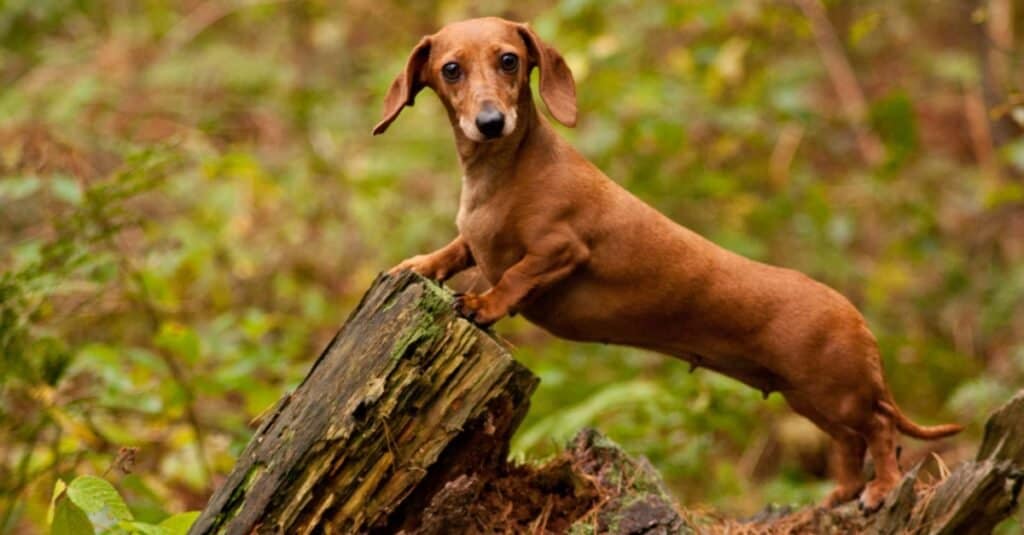
Black nails and noses complement the rustic red fur of red dachshunds.
©iStock.com/NORRIE3699
These dachshunds carry a radiant palette of red tones, varying from a light, almost yellowish hue to a deeper, dark red, encompassing a rustic, brown shade that often leans towards rusty brown. Creating this vibrant spectrum is the influence of the dominant red gene, which only requires a single copy to manifest, making red dachshunds common in the breed. This gene paints them in an array of shades, offering potential owners a delightful range to choose from. Beyond their coat, their physical features add to their appearance. They sport black noses and nails, a sharp contrast to their warm coat, sometimes accompanied by a black shading that adds depth to their overall look.
#11 Cream
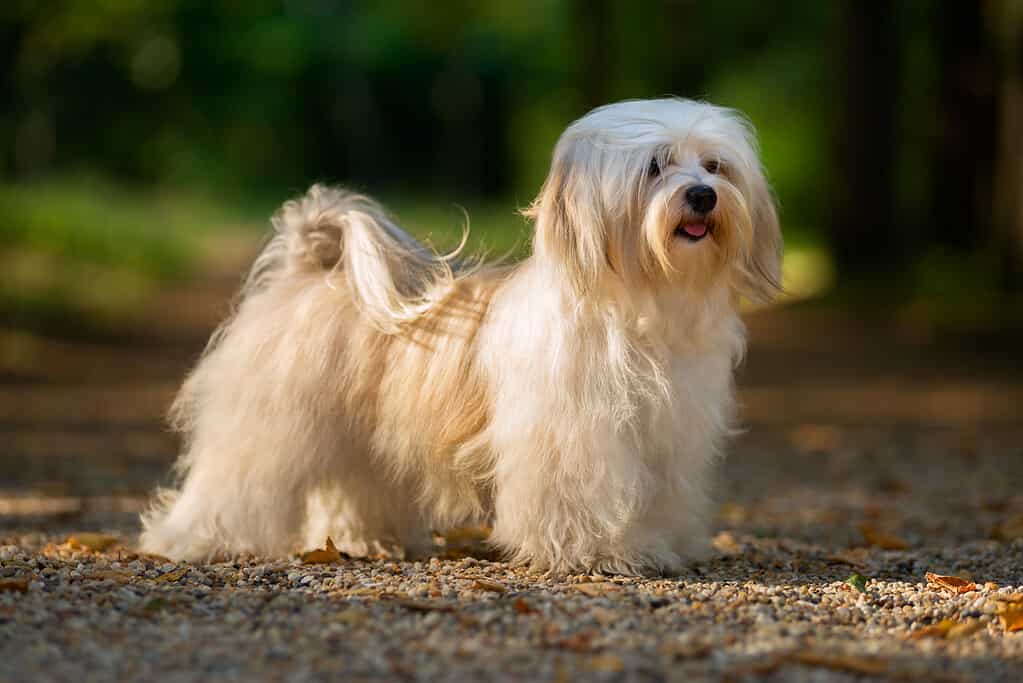
Beautiful young cream
havanese
dog is standing on a sunny forest path in late summer
©Dorottya_Mathe/iStock via Getty Images
Cream dachshunds sport a coat that reminds many of golden retrievers. They can be purely cream-colored or occasionally have hints of black shading. There are two main types of cream dachshunds: American creams and English creams. The American creams lean toward a light red tint in their coat, while the English creams are a paler, pure cream. An interesting tidbit, English creams in the U.S. are usually of the miniature variety. Their lineage can be traced back to a select few U.K. kennels, making them a rare find.
#12 Chocolate and Tan

This coloration of dachshunds really stands out!
©James Player/Shutterstock.com
Chocolate and tan dachshunds blend deep, rich chocolate tones with contrasting tan patches. This duo of colors creates a distinctive appearance that easily captures attention. The defining chocolate hue extends to their noses and tails, serving as an indicator of their authenticity in this specific color combination. Adding to their unique charm is their eye color. While many sport varying shades of brown, it’s not uncommon to find these dachshunds with captivating green, yellow, or even orange eyes.
#13 Blue and Tan
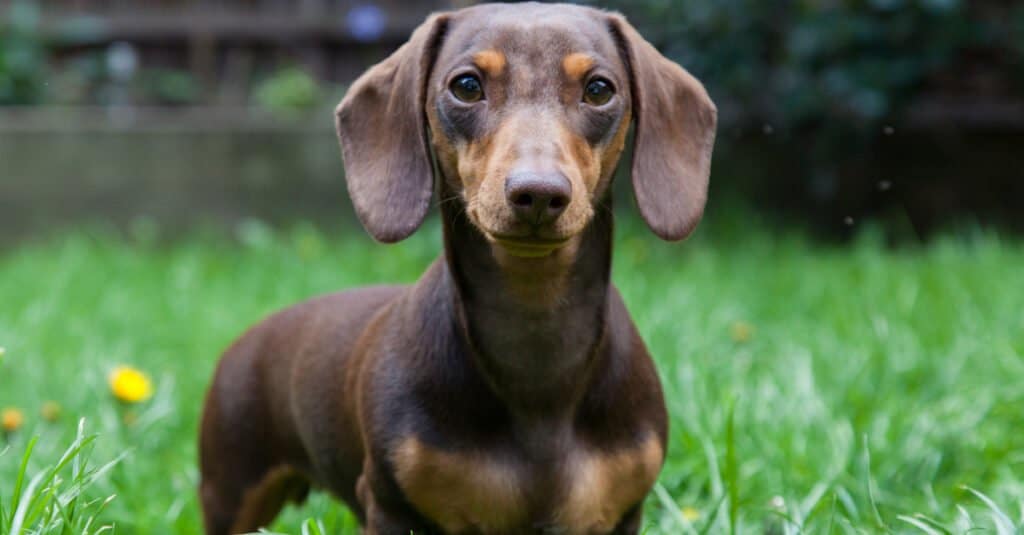
©James Player/Shutterstock.com
Blue and tan dachshunds sport a standout coat characterized by a metallic greyish-blue hue complemented by tan accents. These tan patches distinctively mark their muzzle, chest, legs, and the area above their eyes, adding a warm contrast to the cool primary shade. Unlike some of their dachshund counterparts, you won’t find any black on their coats. This unique blue coloring is the outcome of recessive genes, which lead to the dilute coloration that sets them apart.
#14 Black and Tan

Dachshunds that are black and tan are particularly common.
©Michael E Hall/Shutterstock.com
Black and tan dachshunds are undeniably one of the most recognized combinations within the breed. With a deep, jet-black base coat, these dachshunds showcase pronounced tan markings that adorn their muzzle, chest, legs, and the space above the eyes. This age-old pairing offers a sharp contrast, creating a timeless and striking appearance that many associate with the breed.
#15 Black and Cream
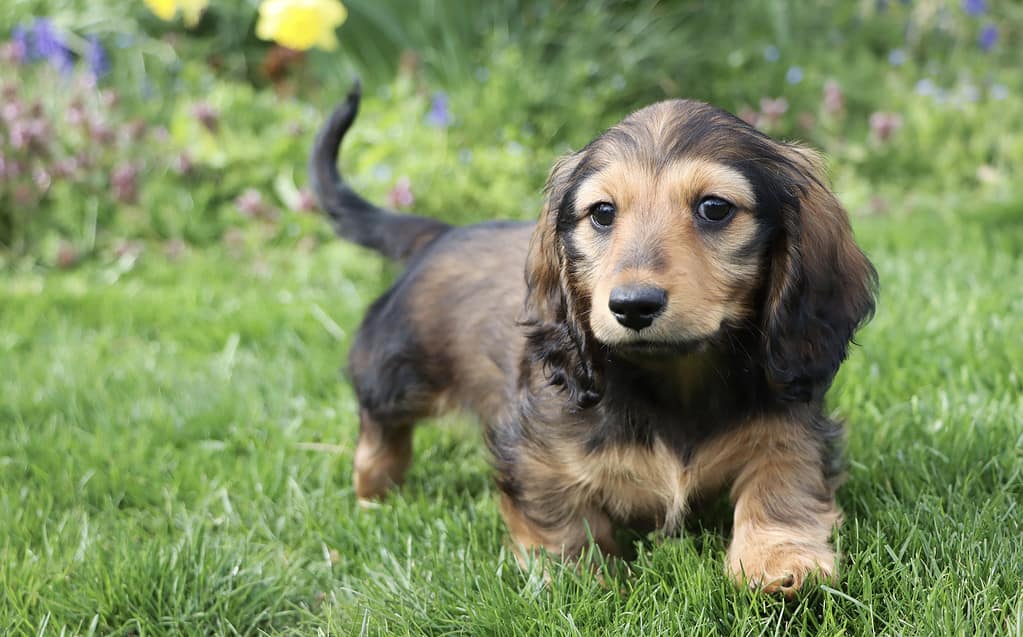
The combination found in black and cream dachshunds results in fur with lovely contrasts.
©Sherri Simms/iStock via Getty Images
Black and cream dachshunds paint a delightful portrait of contrasting shades. Dominated by a rich black on their backs, heads, and legs, the canvas of their coat is gently softened by touches of cream. These cream hues delicately grace their noses, above the eyes, legs, chest, and occasionally, their ears. While they may bear a resemblance to the black and tan dachshunds, a distinguishing factor is the shade of their lighter patches. The black and cream variety possesses a more muted and paler hue, steering clear of the richer tans and standing as a testament to their own unique blend in the dachshund color palette.
Summary of 15 Dachshund Colors
| Number | Color |
|---|---|
| #1 | Black |
| #2 | Fawn |
| #3 | Chocolate |
| #4 | Chocolate and Cream |
| #5 | Fawn and Cream |
| #6 | Fawn and Tan |
| #7 | Blue and Cream |
| #8 | Wild Boar |
| #9 | Wheaten |
| #10 | Red |
| #11 | Cream |
| #12 | Chocolate and Tan |
| #13 | Blue and Tan |
| #14 | Black and Tan |
| #15 | Black and Cream |
The photo featured at the top of this post is © Luiza Kleina/Shutterstock.com
Ready to discover the top 10 cutest dog breeds in the entire world?
How about the fastest dogs, the largest dogs and those that are -- quite frankly -- just the kindest dogs on the planet? Each day, AZ Animals sends out lists just like this to our thousands of email subscribers. And the best part? It's FREE. Join today by entering your email below.
Thank you for reading! Have some feedback for us? Contact the AZ Animals editorial team.






